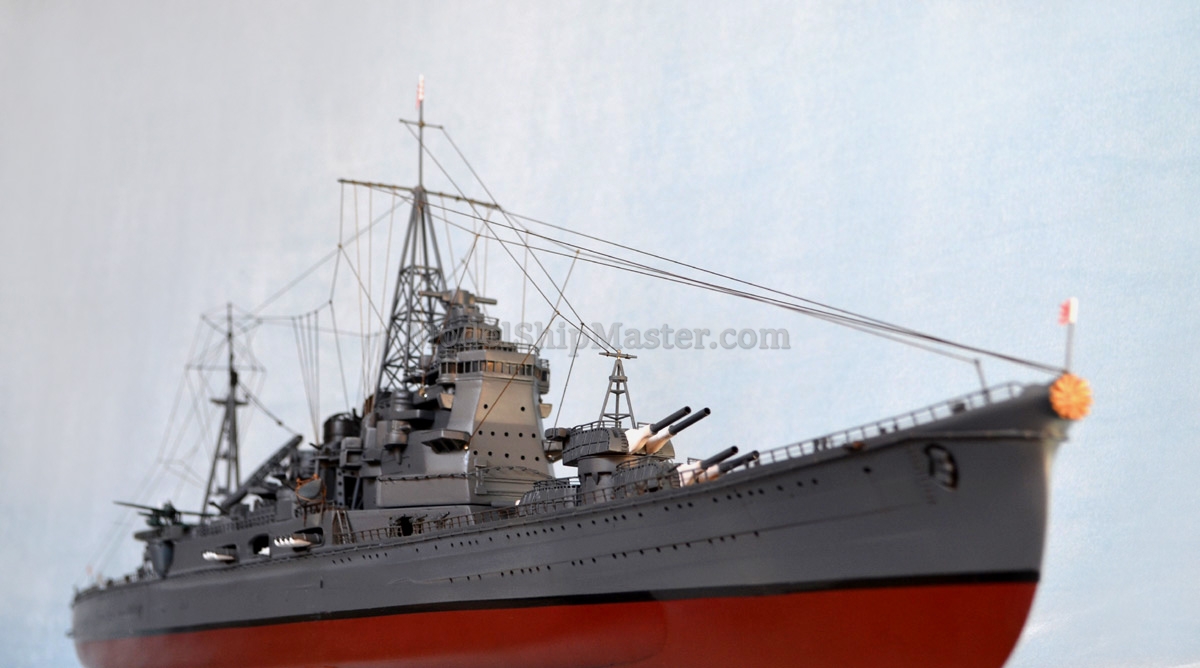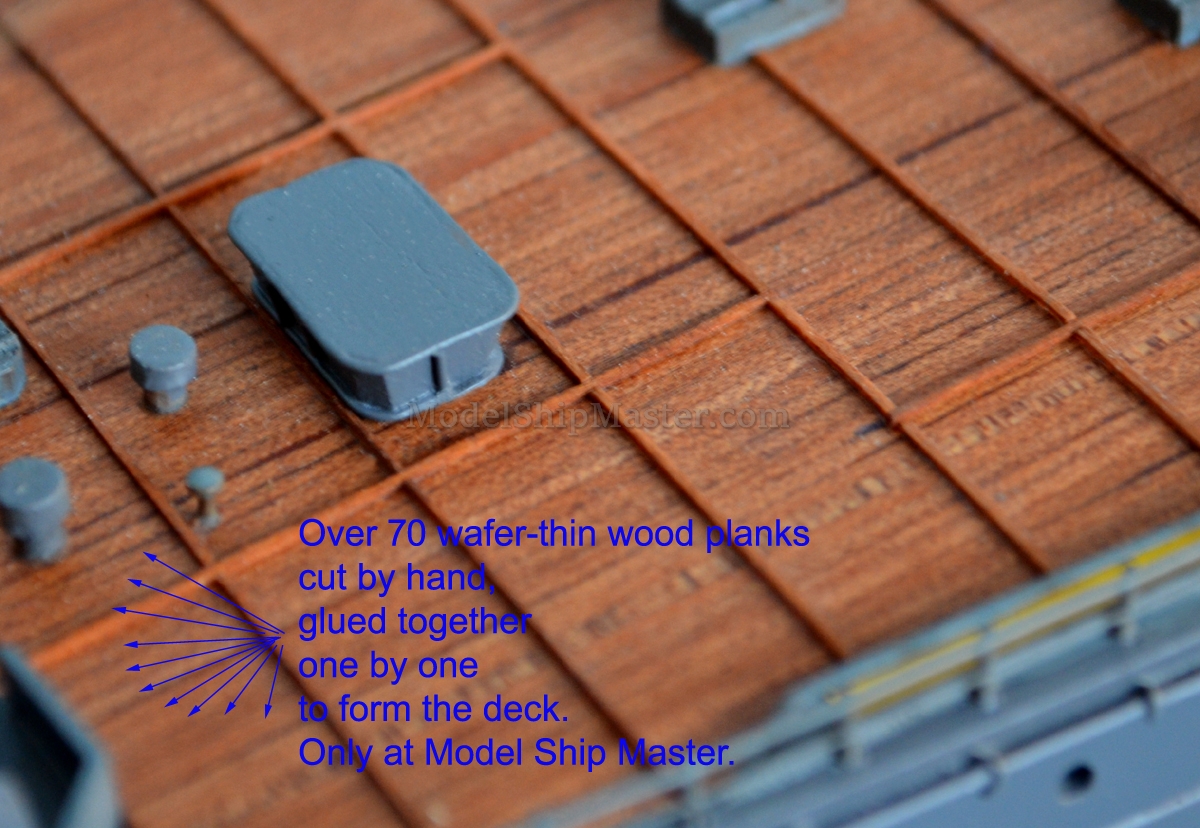|


256-bit encryption
$500,000 protection

|
IJN CHOKAI cruiser
Japanese heavy cruiser model ship
Chōkai was
a Takao-class heavy cruiser, armed with ten 20 cm (8 in)
guns, four 12 cm (5 in) guns, eight tubes for the Type
93 torpedo, and assorted anti-aircraft guns. Chōkai was
designed with the Imperial Japanese Navy strategy of the
great "Decisive Battle" in mind, and built in 1932 by
Mitsubishi's shipyard in Nagasaki.
.jpg)
Our warship models stand
tough and lively. They don't look 'dead' like a plastic
toy or boring simple decorative accessory. That art is
considered by many more challenging than the task of
constructing a warship itself. A classic left
brain/right brain issue...
.jpg)
In July 1942, Chōkai
became the new flagship of Vice Admiral Mikawa Gunichi
and his Eighth Fleet. On 7 August 1942, with Guadalcanal
having been invaded by the Americans, Chōkai headed for
the Guadalcanal waters, with Vice Admiral Mikawa aboard.
In the battle of Savo
Island, Vice Admiral Mikawa's squadron of heavy cruisers
inflicted a devastating defeat on an Allied squadron,
sinking four heavy cruisers (three American and one
Australian) and damaging many ships. Chōkai
sustained several hits, disabling her "A" turret and
killing 34 men. Chōkai returned to Rabaul for
temporary repairs. For the rest of the Solomon
Islands campaign, Chōkai would fight in an assortment of
night battles with the U.S. Navy, sustaining varied, but
mostly minor, damage.
.jpg)
In 1944, Chōkai was made
the flagship of the Cruiser Division Four comprising
Takao, Maya, Atago, and Chōkai. All four ships
took part in the Battle of the Philippine Sea.
Cruiser Division Four suffered a harrowing submarine
attack on 23 October 1944, with the sinking of Maya and
Atago, while Takao was left permanently crippled,
leaving Chōkai as the only undamaged ship. Chōkai was then
transferred to Cruiser Division Five, where she survived
an air attack on 24 October 1944, while the battleship
Musashi was sunk.

On the morning of 25
October, Chōkai engaged an American force of escort
carriers, destroyers, and destroyer escorts in the
Battle off Samar. During her approach to the US
escort carriers, Chōkai was hit amidships, starboard
side. While the 20 lb (9.1 kg) explosive payload
of the shell could not pierce the hull, it set off the
eight deck-mounted Japanese Type 93 "Long Lance"
torpedoes, which were especially volatile because they
contained pure oxygen in addition to their 1,080 lb (490
kg) warheads. The explosion resulted in such
severe damage that it knocked out the rudder and
engines, causing Chōkai to drop out of formation. Within
minutes, an American aircraft dropped a 500 lb (230 kg)
bomb on her forward machinery room. She was
scuttled later that day by torpedoes from the destroyer
Fujinami which also rescued some of her crew. Two
days later Fujinami was itself sunk with the loss of all
hands, including the Chōkai survivors, which makes
Chōkai one of the largest vessels to be sunk with all
hands aboard during World War II. This is also one
of the deepest shipwrecks, at a depth of approximately
8100 meters (26,600 ft), having sunken directly on
waters believed to be within the Philippine Deep in
Mindanao.

|
This primarily wood IJN CHOKAI
cruiser model has the correct gray shade for
Japanese battleship and a beautiful wood deck.
40"
long (1/200 scale) $4,700
Shipping and insurance in the USA included.
Other countries $500 flat rate.
23"
long (1/350 scale)
$2,900
Shipping and insurance in the USA included.
Other countries $250 flat rate.
Detail sharpness is similar to the larger version.

|
Learn more about the
CHOKAI ship
here:
https://en.wikipedia.org/wiki/Japanese_cruiser_Ch%C5%8Dkai
|